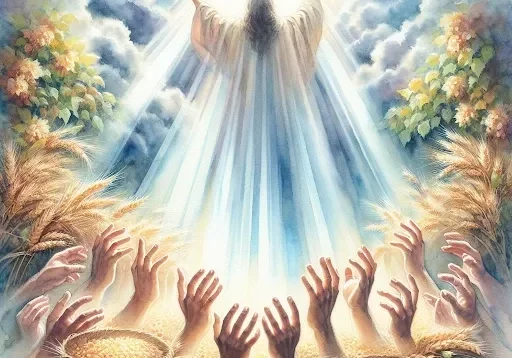Daniel’s 2,300 Days: Symbolism, Timing, and Fulfillment

SHARE
The prophecy of Daniel’s 2,300 days stands as one of Scripture’s most intriguing and debated passages. Found in Daniel 8:13–14, the angelic dialogue reads:
“Then I heard a holy one speaking; and another holy one said to that certain one who was speaking, ‘How long will the vision be, concerning the daily sacrifices and the transgression of desolation, the giving of both the sanctuary and the host to be trampled underfoot?’ And he said to me, ‘For two thousand three hundred days; then the sanctuary shall be cleansed.’”
This mysterious time period unfolds within a vision of rams, goats, and a fierce little horn—images that symbolize earthly empires and powers opposed to God’s people. Historically, the ram represents Medo-Persia (Daniel 8:20), the goat signifies Greece (Daniel 8:21), and the little horn points to a king who magnifies himself against the Prince of princes (Daniel 8:25). The 2,300 days, therefore, are set against the backdrop of political upheaval and spiritual conflict.
In biblical prophecy, days often symbolize years (Ezekiel 4:6; Numbers 14:34), making the 2,300 days a prophetic period of 2,300 years. The focus on the “cleansing of the sanctuary” recalls the Day of Atonement in Leviticus 16, when Israel’s sins were symbolically removed. In the prophetic sense, it points to a heavenly work of judgment and restoration—Christ’s ministry in the true tabernacle (Hebrews 8:1–2).
The “trampling” of the sanctuary and God’s people signifies spiritual corruption and persecution, a recurring theme throughout Daniel’s visions. Just as the earthly sanctuary was defiled by foreign invaders in Israel’s history, the prophecy points to a long period when truth would be obscured and God’s people oppressed.
To determine when the 2,300 years begin, scholars turn to Daniel 9:24–27, where the prophecy of the seventy weeks is “cut off” from the longer timeline. Both are linked by the starting point: the decree to restore and rebuild Jerusalem (Ezra 7:11–26), issued in 457 B.C.
Counting forward 2,300 years brings us to the mid-19th century. Many students of prophecy identify 1844 as the fulfillment, marking the beginning of Christ’s final phase of ministry in the heavenly sanctuary—a time of investigative judgment before His return (Revelation 14:6–7).
This period in history also saw a revival of global missions, the translation of Scripture into numerous languages, and a renewed emphasis on the imminent return of Christ. The cleansing of the sanctuary, therefore, is not merely a date on the calendar but a spiritual movement calling believers to holiness, watchfulness, and readiness.
The prophecy of the 2,300 days reminds us that God’s plans are precise and purposeful. While earthly kingdoms rise and fall, the sovereignty of God stands unshaken (Daniel 2:44). The vision points to a time when truth is restored, the gospel shines with renewed clarity, and the faithful are called to endurance (Revelation 14:12).
In every era, God has preserved a people who honor Him above all. The message of Daniel’s 2,300 days is clear: history is not random; it is moving toward the climactic moment when Christ will return, the controversy between good and evil will end, and God’s kingdom will be established forever.
*Cover Photo/Thumbnail Photo from bibleart.com
RELATED ARTICLES

The Sacrificial Shepherd, Abel

Heaven’s Boring? Bible’s Vision of Work and Joy Gives Eternity Meaning

Welcome the New Year in grand Peninsula style

The Jews in the Holocaust








